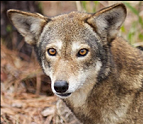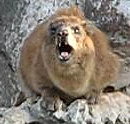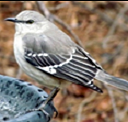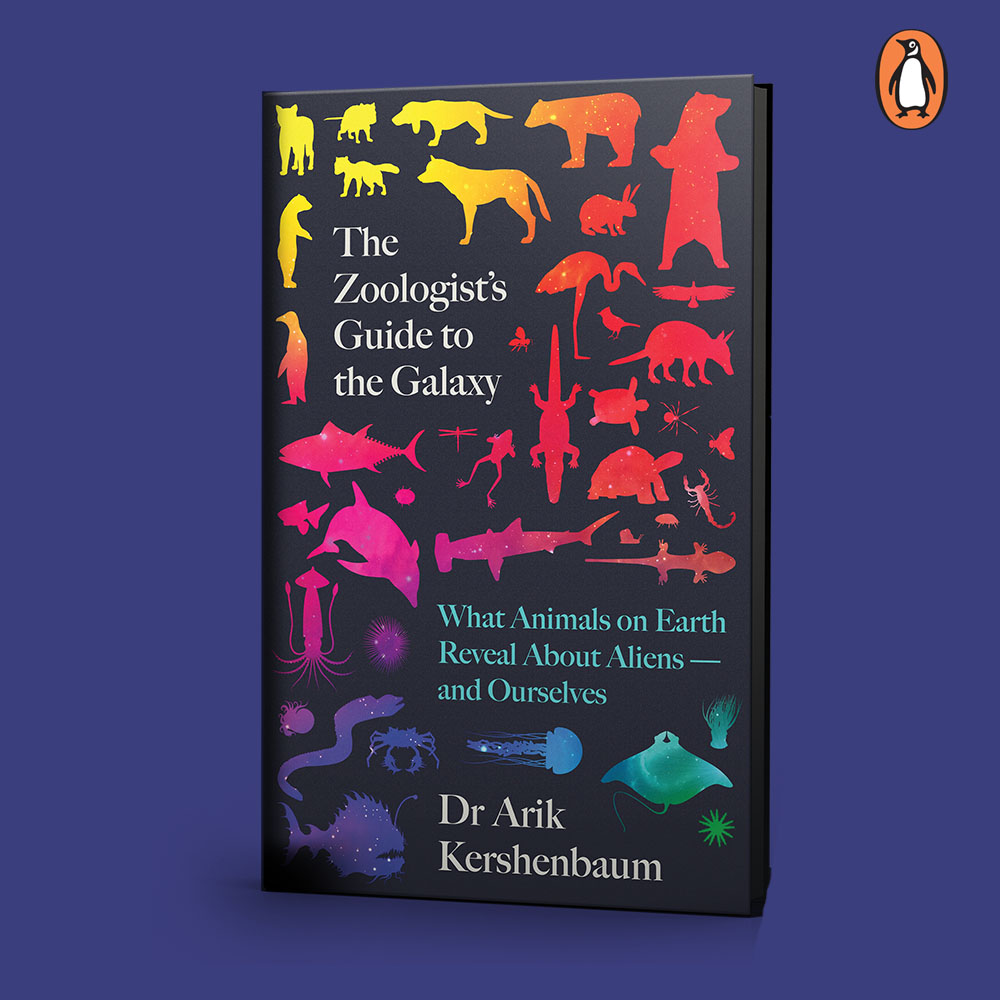Biography
2017-present College Lecturer, College Tutor, and Director of Studies, Girton College, University of Cambridge
2014-2017 Herchel Smith Research Fellow in Zoology, University of Cambridge
2012-2014 Postdoctoral Fellow at the National Institute for Mathematical and Biological Synthesis, Knoxville, TN, USA
2008-2012 PhD in Evolutionary Biology and Ecology, University of Haifa, Israel
Advisors: Leon Blaustein (Univ. of Haifa), Lewi Stone (Tel Aviv Univ.)
1984-1991 BA (Hons), MA. University of Cambridge, Natural Sciences
Research
- Animal vocal communication and evolution of language
- Passive acoustic monitoring of large carnivores
- Xenolinguistics and the Search for Extraterrestrial Intelligence
- Evolutionary ecology and cooperation
- Bioacoustics
- Behavioural ecology
- Mathematical ecology
|
Wolves & other canids
|
Dolphins & cetaceans | Aliens... |
|---|---|---|
 |
 |
|
|
I study the vocal behaviour of wolves in Spain, Italy, and the United States. I am particularly interested in the use of different vocalisations in different behavioural contexts, like territorial interactions, and cohesion calls between distant individuals. This information can help us design conservation and management strategies that prevent conflict between wildlife and humans. |
Understanding dolphin communication is particularly difficult because they are hard to follow in the wild, and their behaviour in captivity is highly restricted. In Eilat, Israel, I study a pod of free-ranging dolphins that are habituated to human presence, and so give us the opportunity to examine the link between vocal and social behaviour. The way that dolphins encode information into sound is more complex and more unusual than we previously thought. | Are there any features of communication that are so universal that we would expect to find them even on other planets? Can we look at the way animals on Earth communicate and understand something of the constraints operating also on alien species? I've written a popular science book on the subject, The Zoologist's Guide to the Galaxy, published by Viking-Penguin bit.ly/3acyDfd |
| Hyraxes | Birds |
|---|---|
 |
 |
Publications
Kershenbaum A., Blumstein D.T, Roch M.A., et al. (2014) Acoustic sequences in non-human animals: A tutorial review and prospectus. Biological Reviews
Kershenbaum A., Bowles A.E., Freeberg T.M., Jin D.Z., Lameira A.R., Bohn K. (2014) Animal vocal sequences: not the Markov chains we thought they were. Proceedings of the Royal Society B
Kershenbaum A., Sayigh L., Janik V. (2013) The encoding of individual identity in dolphin signature whistles: how much information is needed? PLoS One 8(10): e77671
Kershenbaum A., Ilany A., Blaustein L., Geffen .E. (2012) Syntactic structure and geographical dialects in the songs of male rock hyraxes. Proceedings of the Royal Society B 279:2974-2981
Kershenbaum A., Spencer M., Blaustein L., Cohen J.E. (2012) Modelling evolutionarily stable strategies in oviposition site selection, with varying risks of predation and intraspecific competition. Evolutionary Ecology 26(4):955-974
More peer-reviewed journals
Demartsev V, Kershenbaum A, Ilany A, Barocas A, Weissman Y, Koren L, Geffen E (in press) Lifetime changes in vocal syntactic complexity of rock hyrax males are determined by social class. Animal Behaviour
Kershenbaum A., Owens J.L., Waller S. (2019) Tracking cryptic animals using acoustic multilateration: a system for long-range wolf detection. Journal of the Acoustical Society ofAmerica 145:1619
Walton B., Kershenbaum A. (2018) Heterospecific recognition of referential alarm calls in two species of lemur. Bioacoustics
Kershenbaum A., Blumstein D.T. (2017) Introduction to the special column: Communication, cooperation, and cognition in predators. Current Zoology 63:295-299
Demartsev V., Ilany A., Kershenbaum A., Geva Y., Margalit O., Schnitzer I., Barocas A., Bar-Ziv E., Koren L., Geffen E. (2017) The progression pattern of male hyrax songs and the role of climactic ending. Scientific Reports 7:2794
Owens J.L., Olsen M., Fontaine A., Kloth C., Kershenbaum A., Waller S. (2017) Visual classification of feral cat Felis silvestris catus vocalizations. Current Zoology 63:331-339
Kershenbaum A., Déaux É.C., Habib B., Mitchell B., Palacios V., Root-Gutteridge H., Waller S. (2017) Measuring acoustic complexity in continuously varying signals: how complex is a wolf howl? Bioacoustics
Kershenbaum A., Root-Gutteridge H., Habib B., Koler-Matznick J., Mitchell B., Palacios V., Waller S. (2016) Disentangling canid howls across multiple species and subspecies: structure in a complex communication channel. Behavioural Processes
Kershenbaum A., Garland E. (2015) Quantifying animal sequence similarity: which metric performs best? Methods in Ecology and Evolution 6:1452-1461
Kershenbaum A., Freeberg T.M., Gammon D.E. (2015) Estimating vocal repertoire size is like collecting coupons: A theoretical framework with heterogeneity in signal abundance. Journal of Theoretical Biology 373:1-11
Kershenbaum A. (2014) Entropy rate as a measure of animal vocal complexity. Bioacoustics 23:195-208
Demartsev V., Kershenbaum A., Ilany A., Barocas A., Bar Ziv E., Koren L., Geffen E. (2014) Male hyraxes increase song duration and syntax complexity in the presence of an audience. Behavioral Ecology 25:1451-1458
Kershenbaum A., Blank L., Sinai I., Merilä J., Blaustein L., Templeton A. (2014) Genetic indications of landscape dispersal behaviour: a theoretical model and empirical test using the fire salamander. Oecologia 175:509-520
Kershenbaum A., Roch M. (2013) An image processing based paradigm for the extraction of tonal sounds in cetacean communications. Journal of the Acoustical Society of America 134(6):4435-4445
Lameira A.R., de Vries H., Hardus M.E., Hall C.P.A, Mitra Setia T., Spruijt B.M., Kershenbaum A., Sterck E.H.M., van Noordwijk M., van Schaik C., Wich S.A. (2013) Predator guild does not influence orangutan alarm call rates and combinations. Behavioral Ecology and Sociobiology 67:519-528
Kershenbaum A., Stone L., Ostfeld R., Blaustein L. (2012) Modelling transmission of vector-borne pathogens shows complex dynamics when vector feeding sites are limited. PLoS ONE 7(5): e36730. doi:10.1371/journal.pone.0036730
Edlund S., Davis M., Douglas J.V., Kershenbaum A., Waraporn N., Lessler J., Kaufman J.H. (2012) A global model of malaria climate sensitivity: comparing malaria response to historic climate data based on simulation and officially reported malaria incidence. Malaria Journal 11(1):331
Kershenbaum A., Kershenbaum A., Blaustein L. (2011) Rock hyrax (Procavia capensis) den site selection: preference for artificial sites. Wildlife Research 38:244-248
Kershenbaum A., Stone L., Kotler B.P., Blaustein L. (2010) Predation risk can drive cycles in zoonotic disease prevalence. Israel Journal of Ecology and Evolution 56:281-295
Segev O, Mangel M, Wolf N, Sadeh A, Kershenbaum A, Blaustein L. (2011) Spatio-temporal reproductive strategies in the fire salamander: a model and empirical test. Behavioral Ecology 22:670-678
Kershenbaum A., Kershenbaum A., Tarabeia J., Stein N., Lavi I., Rennert G. (2011) Unraveling seasonality in population averages: An examination of seasonal variation in glucose levels in diabetes patients using a large population-based dataset. Chronobiology International 28(4):352-360
Popular science
The Zoologist's Guide to the Galaxy, Viking-Penguin, 2020 https://www.waterstones.com/book/the-zoologists-guide-to-the-galaxy/arik-kershenbaum/9780241406793
TEDx
What Your Dog Can Teach You About Aliens | Arik Kershenbaum | TEDxCambridgeUniversity
Radio
| BBC Radio Cambridgeshire February 2016 Wolf howling | |
|---|---|
| BBC Radio 4 April 2012 The PM Program - hyrax syntax | |
| BBC Radio 5 August 2014 Animal vocal sequences |
Television
NIMBioS videos
| Science Minute: Animal vocal sequences | |
|---|---|
| NIMBioS seminar: Analyzing sequences in animal vocal communication | |
| Video interview: Talking to the animals |
Popular and newspaper
 |
IFL Science February 2016 Wolves Have Different "Dialects" Depending OnTheir Species |
|---|---|
 |
Huffpost Science February 2016 Canines Communicate With Their Own'Howling Dialects,' Study Finds |
 |
Nature 484, 418 (26 April 2012) Mammal sings with syntax |
| Science 18 May 2012: Vol. 336 no. 6083 p. 778 Different dialects | |
 |
BBC Science & Environment April 2012 The rock hyrax surprises with syntax skills |
| The New York Times Science April 2012 Looks Like a Rodent, Croons Like a Bird | |
| The Washington Post August 2014 Do any animals have a true ‘language’? | |
| Science on NBC News April 2012 Wail, chuck, snort: Hyraxes sing complex songs | |
| Wired April 2012 Small Furry Hyrax Sings in Regional Dialects | |
| The National (Abu Dhabi) September 15 2012 Rock stars who sing of their love | |
| Africa Geographic December 2012 Rock stars | |
 |
BBC Nature, August 2011 Hyraxes: why Israel's 'rock rabbits' have become pests |


